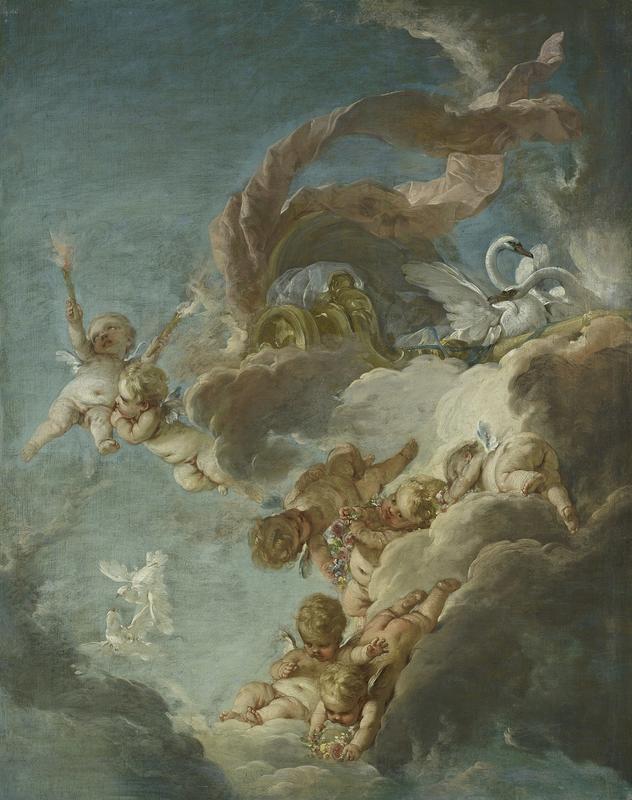More about The Chariot of Venus

Contributor
Francois Boucher is famed for unleashing the Rococo style upon Europe.
The Rococo art movement has long been a target of critics but has endured to become an icon of the 18th century. The thing about Rococo is that it isn’t just an art style, but rather an aesthetic bordering on a way of life. The paintings are meant to be hung along with specific interior decorations set up in a particular way. Unfortunately, most attempts to replicate this are done poorly, resulting in a cluttered vibe. This was exact complaint of Neoclassicalists like Jacques-Louis David or Antonio Canova who would supplant it with their own more simple and harmonious style.
The thing that is interesting is that theoverdesigned, excessively decorative style was the exact opposite of what Francois Boucher was trying to accomplish. Rococo was meant to produce a feeling of openness, lightness, and fluffiness. In fact it was so committed to achieving this that often mirrors were implemented to produce the feeling of vast open space.
Critics said that all the style offered was “fantasies” and it seems they were right. According to scholars of interior decoration, the style was dependent on not appearing manufactured. In a sense, a room decorated in the Rococo style has to be perfect, without any elements that would give away that fact that room did not just spring into existence fully formed.
Which brings us back to the tragedy that is this picture. For while the painting itself is perfectly fine, it is currently being hung in a room that was supposed to hold the Rococo aesthetic. Unfortunately, the room itself is very old. There are many little knicks and scratches on the intricate gilding that frames the painting, and the walls are coated with a green that belongs in the 1970’s, not the 1700’s. Worst of all, next to this painting, poorly covered by a decorative lamp, is a short rectangular protrusion sticking out of the wall no more than a fourth of an inch. It is possibly no more than a plastic covering for some sort of wiring, however it singlehandedly ruins the display. And just like that, this otherwise historic piece of art just becomes another antique in a cluttered room with a dated aesthetic.
Sources
- Pile, John F. “A History of Interior Design” Laurence King Publishing 2005 https://books.google.com/books?hl=en&lr=&id=YVQJvcI1XeoC&oi=fnd&pg=PA10…
- Scott, Katie “The Rococo Interior: Decoration and Social Spaces in Early Eighteenth Century Paris” Yale University Press 1995 https://books.google.com/books?hl=en&lr=&id=AAz1nmpvvykC&oi=fnd&pg=PA1&…
- Stein, Perrin “François Boucher (1703–1770)” The Met October 2003 https://www.metmuseum.org/toah/hd/bouc/hd_bouc.htm
- Web Contributor “Rococo Interior Design: Style & Elements” Study.com viewed on 01/08/2020 https://study.com/academy/lesson/rococo-interior-design-style-elements…











